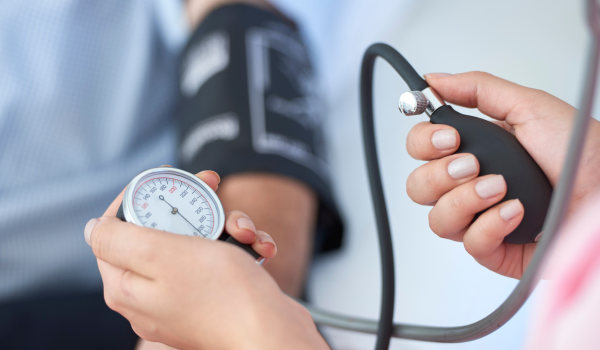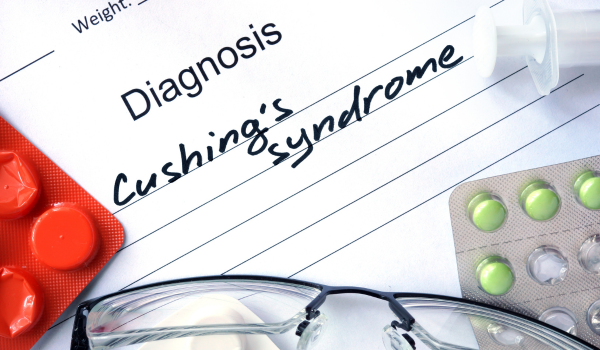.png)
Why Diagnosis Matters
Cushing’s syndrome is a rare but serious condition caused by prolonged exposure to excessive cortisol, often called the stress hormone. Because its symptoms—such as weight gain, fatigue, high blood pressure, and mood changes—overlap with more common health problems, diagnosis is often delayed.
An accurate diagnosis is critical because untreated Cushing’s syndrome can lead to diabetes, osteoporosis, cardiovascular disease, and even life-threatening complications. Doctors must carefully evaluate symptoms, confirm abnormal hormone activity, and identify the underlying cause before starting treatment.
Initial Evaluation
The diagnostic journey usually begins with a thorough medical history and physical examination. A doctor will:
-
Ask about symptoms such as weight gain, skin changes, mood swings, and irregular periods.
-
Review current and past medications, especially corticosteroids, which can mimic or cause the condition.
-
Check for physical signs like moon face, buffalo hump, purple stretch marks, and muscle weakness.
This first step helps determine whether further testing for Cushing’s syndrome is necessary.
Blood Tests
Blood tests are a central part of diagnosis, as they measure cortisol levels directly. The most common include:
-
Serum cortisol test: Measures cortisol in the blood at different times of day. Normally, cortisol is highest in the morning and lowest at night. Consistently high levels suggest a problem.
-
ACTH levels: Measuring adrenocorticotropic hormone helps distinguish between adrenal-based and pituitary/ectopic causes. Low ACTH with high cortisol often points to an adrenal tumor, while high ACTH may signal pituitary or ectopic production.
These tests provide a snapshot of hormone activity, but since cortisol fluctuates naturally, repeat testing is often required.
Urine Tests
A 24-hour urinary free cortisol test is a widely used diagnostic tool. Patients collect all urine over a 24-hour period, and lab analysis measures the total amount of cortisol excreted.
Key points about this test:
-
It captures overall cortisol production, offering a more complete picture than single blood samples.
-
Elevated results strongly suggest Cushing’s syndrome.
-
Because stress, illness, or medications can influence results, doctors may ask for multiple collections on different days.
This test remains one of the most reliable initial screening methods.
Saliva Tests
Late-night saliva testing is a convenient, noninvasive method for detecting abnormal cortisol patterns. Normally, cortisol levels drop at night, but in people with Cushing’s syndrome, they stay elevated.
-
Patients collect saliva at home late in the evening.
-
Samples are analyzed for cortisol concentration.
-
Abnormally high nighttime cortisol supports a diagnosis of Cushing’s syndrome.
This test is especially useful for early detection because it pinpoints disruptions in the body’s natural daily rhythm.
Dexamethasone Suppression Test
The low-dose dexamethasone suppression test (DST) is another cornerstone of diagnosis. Dexamethasone is a synthetic steroid that normally signals the body to reduce cortisol production.
-
In the test, patients take dexamethasone by mouth.
-
Blood cortisol levels are measured the next morning.
-
In healthy individuals, cortisol drops. In Cushing’s syndrome, cortisol remains high.
The high-dose DST may follow if results are abnormal. This helps differentiate pituitary-related Cushing’s disease from adrenal or ectopic causes.
Imaging Scans
Once abnormal hormone production is confirmed, imaging is used to locate the source.
-
MRI scans: Useful for detecting pituitary adenomas that produce excess ACTH.
-
CT scans: Often used to evaluate the adrenal glands for tumors or enlargement.
-
Chest or abdominal scans: May be ordered to search for ectopic ACTH-producing tumors.
Imaging cannot diagnose Cushing’s syndrome alone, but it plays a vital role in identifying the cause once biochemical tests confirm cortisol excess.
Inferior Petrosal Sinus Sampling
When test results are unclear, doctors may recommend inferior petrosal sinus sampling (IPSS). This advanced procedure involves:
-
Inserting thin catheters into veins near the pituitary gland.
-
Measuring ACTH levels directly from blood draining the pituitary.
-
Comparing these levels to ACTH in the general circulation.
If ACTH is higher near the pituitary, it suggests a pituitary tumor. If not, the excess ACTH likely comes from an ectopic tumor elsewhere.
IPSS is considered the gold standard for distinguishing between pituitary and ectopic causes when other tests are inconclusive.
Differential Diagnosis
Doctors must also rule out other conditions that mimic Cushing’s syndrome, such as:
-
Obesity and metabolic syndrome
-
Polycystic ovary syndrome (PCOS)
-
Depression or chronic stress
-
Alcohol-related disorders
These conditions can share similar symptoms, but biochemical testing helps separate them from true cortisol overproduction.
Challenges in Diagnosis
Diagnosing Cushing’s syndrome is not always straightforward. Challenges include:
-
Fluctuating symptoms: Cortisol levels can vary from day to day.
-
Mild cases: Sometimes called subclinical Cushing’s syndrome, where symptoms are subtle.
-
Medication influence: Corticosteroids for other conditions can confuse results.
-
Overlap with common disorders: Weight gain, hypertension, and mood swings often have other causes.
This complexity explains why multiple tests are often required before a firm diagnosis is made.
Importance of Early Detection
The sooner Cushing’s syndrome is diagnosed, the better the outcome. Untreated, the condition increases the risk of:
-
Severe high blood pressure
-
Diabetes complications
-
Bone fractures and osteoporosis
-
Cardiovascular disease
-
Mental health decline
Early recognition and precise diagnosis allow for timely treatment, whether through surgery, medication adjustments, or hormone-blocking therapies.
Patient Role in Diagnosis
Patients can play an active role in speeding up diagnosis by:
-
Keeping a record of symptoms, including when they began and how they have progressed.
-
Noting any medications, especially corticosteroids, and sharing this with the doctor.
-
Reporting changes in mood, energy, and appearance.
-
Asking questions about test results and next steps.
Patient awareness and clear communication often lead to quicker recognition and treatment.
Next Steps After Diagnosis
Once Cushing’s syndrome is confirmed, doctors move on to treatment planning. Options depend on the underlying cause and may include:
-
Surgery to remove pituitary or adrenal tumors
-
Adjusting or tapering corticosteroid medication
-
Targeted cancer treatment for ectopic ACTH-producing tumors
-
Medication to control cortisol production
Accurate diagnosis is the foundation for effective treatment and long-term recovery.


.png)
.png)


